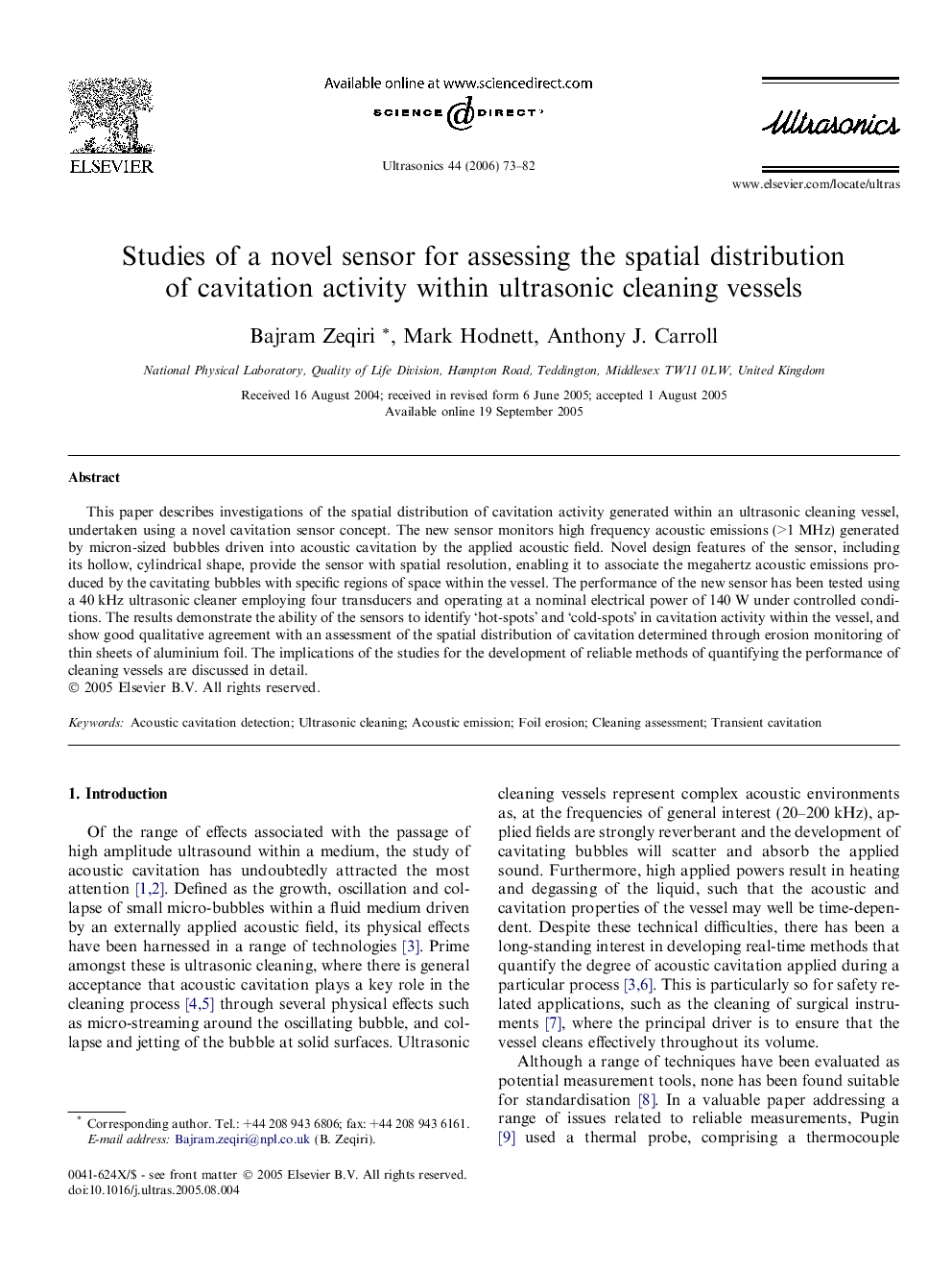| Article ID | Journal | Published Year | Pages | File Type |
|---|---|---|---|---|
| 1759926 | Ultrasonics | 2006 | 10 Pages |
This paper describes investigations of the spatial distribution of cavitation activity generated within an ultrasonic cleaning vessel, undertaken using a novel cavitation sensor concept. The new sensor monitors high frequency acoustic emissions (>1 MHz) generated by micron-sized bubbles driven into acoustic cavitation by the applied acoustic field. Novel design features of the sensor, including its hollow, cylindrical shape, provide the sensor with spatial resolution, enabling it to associate the megahertz acoustic emissions produced by the cavitating bubbles with specific regions of space within the vessel. The performance of the new sensor has been tested using a 40 kHz ultrasonic cleaner employing four transducers and operating at a nominal electrical power of 140 W under controlled conditions. The results demonstrate the ability of the sensors to identify ‘hot-spots’ and ‘cold-spots’ in cavitation activity within the vessel, and show good qualitative agreement with an assessment of the spatial distribution of cavitation determined through erosion monitoring of thin sheets of aluminium foil. The implications of the studies for the development of reliable methods of quantifying the performance of cleaning vessels are discussed in detail.
